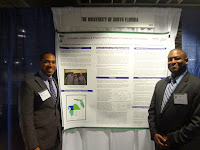A number
of years ago Massachusetts Institute of Technology (MIT) Center for Bits and
Atoms launched the first “Fab Lab” or fabrication
laboratory. A worldwide network of “Fab Labs are connected with each other
and the MIT Center by having a defined set of tools and equipment, shared resources
for training, managing, organizing, and projects. Envisioned as a place to seed
and expand product-based, small businesses across the U.S., Fab Labs began to
grow in numbers across the country in libraries, community organizations, museums,
and educational institutions.
Typically,
a Fab Lab has a large (4'x8') numerically-controlled milling machine, a
precision (micron
resolution) milling machine, modeling software with stations
for product design, a 3D printer, laser etcher, a computer controlled laser
cutter, and a sign cutter. Many have added additional (optional) tools. A
generic business model suggests charging a user fee for use of the lab and its equipment,
that there is a full time lab tech/manager, and offer a number of services to
the community of users (some for pay, others for free). They attract the
independent inventor, craft makers, educators, students and the curious. Furthermore,
the very “21st century, digitally-connected community” relies on modern
social media tools and the individuals in the connected network to keep it
going.
Many anticipated
that Fab Labs would be one vehicle to help pull us out of the recession, invigorate
STEM learning in schools, catalyze innovation, and seed the personal digital
fabrication movement. I am not sure if anyone knows yet what contribution Fab
Labs individually, or collectively have made to any, or all of these. They have
spawned other more grassroots “maker movements” in communities across the
country. Typically these organizations support various community events to
share technology-supported “crafts” and homemade products. At maker events, everyone who wants to share,
teach, sell, or learn gathers at the maker events for a small fee. Certainly, these organizations provide
similar opportunities to network.
You can
learn about Fab Labs, in a couple of upcoming events. On Dec 13, 2013 at 1 p.m.
EST, MATEC, the Maricopa Advanced Technological Education Center of Excellence,
will host a free webinar “Collab and Fab” sponsored by the Digital Fabrication
Learning Community (www.dflc.org). The
webinar’s theme highlights the collaborative nature of the Fab Lab network for
product design and prototyping. This digital collaboration approach is already
an industry standard for companies that have engineering, design and production
facilities around the globe. You can register for the webinar at www.matecnetworks.org, or directly here.
Locally
in Florida, from January 8-10, 2014, FLATE and Collaborative Center for
Emerging Technologies
 (CCET) at St. Petersburg College together with the DFLC are
hosting a workshop that will delve into product design and prototyping with a
hands-on approach. Community college educators from around the county will be
gathering at the CCET at SPC’s Clearwater campus to engage not only in the
technologies, but also in their place in community college technical programs
like our Engineering Technology A.S. Degree, Electronics Engineering
Technology, Drafting and Design, etc. If you live and work in Florida, you can
find out more and register by contacting me at barger@fl-ate.org. If you do not live in
Florida you can contact Jim Jannise at janisse@fvtc.edu.
(CCET) at St. Petersburg College together with the DFLC are
hosting a workshop that will delve into product design and prototyping with a
hands-on approach. Community college educators from around the county will be
gathering at the CCET at SPC’s Clearwater campus to engage not only in the
technologies, but also in their place in community college technical programs
like our Engineering Technology A.S. Degree, Electronics Engineering
Technology, Drafting and Design, etc. If you live and work in Florida, you can
find out more and register by contacting me at barger@fl-ate.org. If you do not live in
Florida you can contact Jim Jannise at janisse@fvtc.edu.
We wrap-up our last edition of the 2013 newsletter
with many exciting stories that highlight our curriculum, professional
development and outreach initiatives. Continuing our line-up of reports on
engaging women in STEM we underline key themes that emerged from the recruiting
girls in STEM workshop. Given the surge in demand for skilled machinists we step
aside to define the nuts & bolts of machining education in Florida. Venturing
out west, we take you to Nevada where a nascent NSF project is working on cultivating
problem-based learning. Last but not the least, as you wind down for the holidays
check your answer to last month’s sTEm puzzle, and don’t forget to sign up for
the 2014 FESC Community College Workshop coming up in January.
I am sending warmest wishes for a safe holiday to
all of our FLATE stakeholders, partners, families and friends from the FLATE
staff and working team. Have a holly, jolly Christmas and a very happy
new year ahead!

































